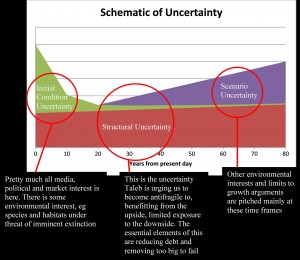Would you rather have someone giving you advice to be independent or disinterested? The Oxford English Dictionary (OED) definitions suggest some crossover but ultimately quite distinct meanings for the two words:
Disinterested
- not influenced by considerations of personal advantage
- having or feeling no interest in something
Independent
- free from outside control; not subject to another’s authority
- not depending on another for livelihood or subsistence
- capable of thinking or acting for oneself; not influenced by others; impartial
- not connected with another or with each other; separate; not depending on something else for strength or effectiveness; free-standing
I would opt for a disinterested adviser rather than an independent one every time. After all, you don’t want an adviser who is not connected with another or with each other. Those are normally the reported attributes of someone who has just done something terrible. And requiring your adviser to be neither subject to another’s authority nor depending on another for livelihood or subsistence probably means restricting yourself to people working on their own with no clients.
In opting for disinterested as a better adjective for advisers to shoot for, I am excluding the second definition here (some will argue that this is uninterested in any case, but 20% of the usage of the word disinterested is in the uninterested sense). Although many people giving advice will find their interest in advising anyone ever again for the rest of their lives waning at times, most of them return to being interested after a few days away from it, particularly if they have just enjoyed a holiday benefiting from the freely dispensed advice of their nearest and dearest.
However the definition of disinterested only takes us so far. You could be not influenced by considerations of personal advantage and yet still not be working in someone else’s best interests.
The Actuaries’ Code states that a conflict of interests arises if a member’s duty to act in the best interests of any client conflicts with:
a) the member’s own interests (ie you would not be disinterested by the OED definition); or
b) an interest of the member’s firm; or
c) the interests of other clients (you can’t provide full-blooded no-holds-barred advice to a client if you are also advising a company who is trying to buy them, sell them, merge with them or has different interests within the same organisation).
Consideration b) of this list then introduces a requirement on actuaries to take reasonable steps to ensure that they are aware of any relevant interest, including income, of their firm. And with this awareness comes the same responsibility to deal with any conflict arising as a result. However the Code is very much aimed at individual actuaries rather than their firms.
The Law Society’s practice note on conflicts of interest takes a similar line, recognising two types of conflicts of interest: own interest conflict (which includes the lawyer’s own interests and those of the lawyer’s firm) and client conflict. However it goes further by making it clear that the note applies to individuals and to firms collectively. Conflicts of interest are also regulated by the Solicitors Regulation Authority (SRA) within an overall framework of regulation that has two elements: firm-based requirements and individual requirements. It focuses on the practices of regulated entities as well as the conduct and competence of regulated individuals. This approach allows the SRA to take regulatory action against firms or individuals, or both, in appropriate cases.
All of this is fine as far as it goes, but I wonder if a process that relies on individuals effectively acting as investigators within their own firms to dig up instances where either the spirit or letter of some code is infringed is ever going to prevent deeply embedded practices on its own. It is very difficult to call time on arrangements which are making people money, particularly when you are dependent on the people making the money for your job.
Perhaps another way to go (or an additional one, as in this case I don’t think there is a conflict involved!) would be to recognise the meaning of the Latin root of the word conflict, which is conflictus, meaning contest. Wouldn’t it be helpful to individuals trying to avoid conflicts of interest if the companies they worked for operated a conflict of disinterest? Where firms competed with each other to demonstrate how disinterested they were. Where firms felt it gave them a competitive advantage to show how the only thing they had at stake in taking on a client or a project or any other piece of work was the agreed fee.
For a firm actively engaging in a conflict of disinterest, the individuals working for it wouldn’t have to knock down several doors to raise their concerns, they would find they were regularly being asked about the status of potential conflicts of interest, in case they in turn were in conflict with the firm’s client agreements and promotional material. The markets clients worked in would be regularly scanned for intelligence on deals in the pipeline and the firm’s own client lists would be scrutinised for potential implications.
So how could such a conflict of disinterest be brought about? By campaigning for it. If this is how we want business to be done we need to ask for it. If a change in public expectations of corporate tax management practices can lead to significant changes in those practices, the same could be achieved on conflicts of interest.
Because currently they are everywhere. At one end is the chimney sweep who brought a pile of soot down onto my new carpet and then turned to me and told me not to worry as he also ran a carpet cleaning business. At the other are the ratings agencies, paid by the firms they are rating, who both give credit ratings on financial instruments and advise individual firms on how to construct those financial instruments so as to score the highest possible ratings, which ultimately contributed significantly to the market crash and subsequent economic recession we have still not recovered from.
So declare a conflict of disinterest today and let’s start a movement.








